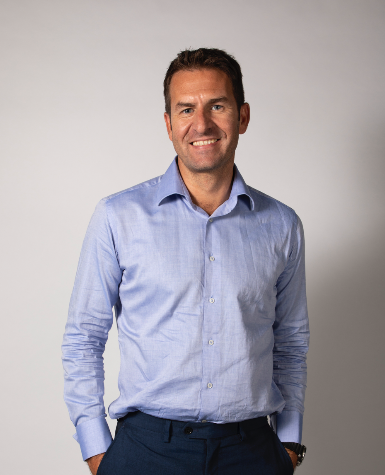Building A Purpose-Driven Brand: Q&A With CID Consulting’s Dalia Wahba
BB: Sustainability has become one of the buzziest words in the glossary of brands. In your opinion, what defines a sustainable brand?

DW: A sustainable brand thinks strategically in managing and operating its resources in an inclusive manner by maximizing the engagement of and benefits for customers, stakeholders, employees, that results in positive value to all parties.
In other words, through translating the principles of sustainable development into business practices, a sustainable business approach entails an optimal interaction of economic, human, environmental and technological systems that complements or adds to the external society and environment.
This notion of ‘sustainopreneurship’ manipulates the art and science of branding in a way that allows the use of creative business tactics to target issues related to the sustainability paradigm. A sustainable brand conforms to the implicit expectations of its community; As a result, social and environmental sustainability become strategic objectives and the development process sustains present needs while recognizing and maintaining an understanding of our obligations to future generations.
All this build the fundamental of a purposeful company which is an instrumental foundation for any growing company in this time and age.
BB: In the past ten years, promoting sustainability has evolved to being one of the fundamental key pillars of any brand’s communication process. How can brands effectively create shared value through matching social cause with consumer sentiment? What kind of opportunities does it open?
DW: It is essential for brand values to adhere to and remain consistent with consumers’ individual identities and to stay up to date with prevailing cultural ideals. For examples, Consumer sentiments have shown increasing concerns regarding climate change and sustainability which stresses the need for maintaining an environmentally-responsible brand image. Thus, positioning this brand among such relevant environmentally consciously customers expand the company foot print and reach; it motivates the employees that are after working in a purposeful company and establish the brand among its stakeholders as a strategic partner at many fronts.
Brands can negotiate their role in society through corporate social responsibility activities such as philanthropy, sustainable practices, cause-related marketing and green marketing. There is a morally justified consensus that firms can use their resources to fix negative externalities such as pollution. Nielson group conducted a survey that portrayed that 50% of consumers are willing to spend more on goods and services from socially responsible companies.
So, the brand experience need to reflect the values and the principles that the company is promoting, it is not only about intentions, yet it is about actions and how creative are we in delivering such experience to the customer.
For example, several companies in Egypt set up their employee engagement program in social investment in education whereby all employees will commit to minimum hours of voluntary work annually in delivering specific programs to students in public schools. Such brand ambassadors build a highly effective image about the brand across many stakeholders, thus positive reputation in the market.
The mere concept of promoting active collaboration of sharing values leads to realizing competitive advantages opportunities and promoting synergies of sustainable economic endeavors. Brands can achieve economic success by applying innovative environmental and/or social practices through using strategic management where executives can better position their brands to gain a sustainable competitive advantage.
BB: To cut through the noise, brands must get more sophisticated in their methodology and create impact. How can brands move from being socially responsible to being socially impactful?
DW: A brand can be socially responsible yet not sustainable; Brands can move from being socially responsible to socially impactful for example by the current momentum for social entrepreneurship as a sustainable development tool and understanding the necessity to fill in the gaps in the social enterprise ecosystems. This can be done through using entrepreneurship and sustainable development as solutions to assure the future development of the entire society and implementing the actions necessary to meet obligations of future generations. Young people are aspiring to join the entrepreneurial world with a purposeful and effective mission, here is an opportunity for companies to channel its resources to such demand and energy. Designing Social investment programs targeting this segment and the relevant development issues, can bring outstanding results to the community.
Sustainable brands can be recognized as vehicles for societal transformation through activities such as sourcing ingredients that have a neutral or positive impact on the climate, using renewable energy from concept to shelf, insisting on carbon neutral transportation, and looking after, empowering and engaging employees. For example, one of Vodafone subsidiaries launched a SIM card pack made of 100 per cent biodegradable paper and redesigned its plastic SIM packs to use polypropylene, a recyclable material.
BB: A sustainability program that is consistent with a brand’s positioning will create value for companies by creating more value for its brands. Please comment with examples from brands of the Middle East
DW: Building a sustainable company is a transformational journey, the company needs to build its success equation beyond short term profits and money making to how to build a lasting organization and impactful at every milestone of its growth. A sustainability program consistent with a brand’s positioning can efficiently position and differentiate the company based on acknowledging and acting upon competitive strengths and insight gained about consumer’s motivation for using this brand. Such a program strengthening a company’s brand is a core point of differentiation when positioning a brand due to its ability to become a sustainable point of comparative advantage relative to competition since the brand cannot be easily replicated.
The program could create value by creating a strong socially/environmentally conscious brand image, it can leverage that strength in marketing further brands. However, it is important that a sustainability program is consistent with the overall brand image and positioning to avoid confusing the consumer; in addition, goals should not be overly-positioned so that it does not create unrealistic expectations that are difficult to satisfy. Moreover, by creating more value for the consumer and thus increasing brand loyalty, more value is accumulated for the brand and in turn, the company.
Chalhoub Group, an organization operating in the fields of beauty, fashion, and gift giving in the Gulf Region, has continuously improved their efforts towards creating a sustainable brand. The organization strives to reduce their carbon footprint by educating employees on regional environmental issues. Furthermore, the group has implemented an energy efficiency campaign as well as environmental policies. For example, regarding energy efficiency, the group has created a ‘Sustainable Stores Checklist’ which ensures that all new stores will meet energy efficiency standards by having a daily checklist through which managers ensure waste management, and energy saving policies are being followed. Furthermore, the group has been working towards gaining ISO 14001 certification for their largest warehouses. A study conducted by the Chalhoub group revealed that 83% of clients expect proactive engagement in sustainable practices by the luxury companies they shop with. Therefore, by engaging in sustainable practices, the group can create value for clients by establishing a strong relationship between the client and the product.
BB: Brands that have put societal and environmental responsibility at the forefront of their brand strategies have registered a higher business growth rate than others in the same category. How can sustainability drive business growth?
DW: Purposeful mission of companies is becoming an instrument of success for many organization, small or large. It creates a unique positioning to the corporate brands and products among its employees, customers and shareholders; This is effectively delivered through a robust strategy and values to everybody. This translates into growth. the mobilization of such mission creates business growth.
Also, Sustainable entrepreneurship is a component of the support system for sustainable development where entrepreneurial enterprises are viewed as the driving force for innovation and competitiveness. Hence, when firms reconcile sustainability aspects with profitability while recognizing that entrepreneurship and innovation need to integrate to diffuse sustainability demands, productivity can follow.
Many business researchers confirmed that the internal drivers of sustainable branding are operating costs, revenue growth, employee engagement, brand integrity, transparent leadership, effective internal relationships and structures while external drivers are regulations, green score cards, media and NGOs, climate change, science resource scarcity and consumer demand. Embracing and adopting such principles in companies bring.
BB: CID has advised and worked with P&G, Danone among other brands and organizations on sustainability issues. What’s your take on sustainability among Egyptian brands and if you’re to name your most favorite and impactful brand in the sustainability metric in Egypt, who would you name?
DW: My view on Egyptian brands’ relation to sustainability may be biased relative to my exposure to sustainability campaigns, yet it is important to recognize international and local brands.
Danone
Danone decided to reposition its brand image purpose from creating shareholder value to contributing to the society and the environment. It now targets long-term sustainable value creation through innovation governance and employee engagement. The firm announced that it is now seeking “B corporation” certification for all subsidiaries, which rewards ethical, socio-environmental practices, and can potentially attract more mainstream investors. It emphasized in its announcement that Danone began its ‘benefits for all’ as opposed to ‘benefits for shareholders only’ approach by driving actors in their value chain, from suppliers to consumers, to promote health conscious improvements through aiming to achieve carbon-neutral mineral water -through attempting to make grey recycled plastic attractive to drink from-, and running non-profit ventures for poor children.
They have a large value chain composed of partners as cattle breeders, and customers like mothers and kids; Danone found an opportunity to help foster sustainability through engaging these components of their value chain. Furthermore, this inclusive growth approach targets supporting and empowering farmers, waste pickers, caregivers and all members of the Danone ecosystem.
In addition, Danone recognizes the importance of and thus aligns with the UN Sustainable Development Goals (SDGs) in creating a ‘dual approach’ to bring health and food to as many people as possible. It provides a main focus on the following goals: SDG 2 “Zero Hunger” through ensuring access to healthy and safe food, SDG 3 “Good Health and Wellbeing” by ensuring wellbeing of young children and mothers, SDG 6 “Clean Water and Sanitation” by providing access to water and maintaining water ecosystems, SDG 12 “Responsible Consumption and Production” focusing on better management of waste and natural resources, SDG8 “Decent Work and Economic Growth” to promote inclusive and secure work environments and SDG13 “Climate Action” aiming to become carbon neutral by 2050 through adopting The Science Based Targets initiative.
P&G
CID is proud of having designed several Flagship projects with P & G that resolved business problems and contributed to the social and economic development in disadvantaged communities. So, P&G has become a sustainability leader through actively participating in considerable efforts to promote product development to help serve third world problems and align with Sustainable Development Goals to build equity and reputation. They adopted an approach promoting that improving their consumers’ lives is not exclusively reliant on enhancing products, but that it is necessary to be a force for good rather than a force for growth. In April 2018, they announced the “Ambition 2030” goals to show their commitment to create a positive impact while creating value for all actors including consumers, partners and the company. In this approach, they included changing the brand image as to inspire responsible consumption, manipulating the supply chain to cut greenhouse emissions and increase renewable electricity, targeting building a society that fosters transformative partnerships to protect the planet, and finally, aiming to engage, equip and reward employees.
As for the SDGs, P&G have been working on the following goals: SDG 3 to ensure healthy lives and to potentially reduce mortality rates through the Pampers Mobile Clinic Program; which provides free basic health checks, health talks and products to mothers and their babies, SDG 5 to achieve gender equality and ensure universal access to sexual and reproductive health and reproductive rights, SDG 6 to ensure water and sanitation by introducing their not for profit Children’s Safe Drinking Water Program to improve health of children in developing countries, SDG 12 to ensure sustainable consumption and production by reducing waste generation through prevention and increasing the number of zero manufacturing waste to landfill sites, SDG 13 to combat climate change by running an initiative to transform all washing machines into using cold water; finally, they adopted SDG 15 to protect ecosystems through procurement practices ensuring the sustainability of the world’s forest resources by aligning with the Consumer Goods Forum to help achieve zero net deforestation.
Other efforts: P&G’s water purification treatment originally began as an effort to improve its laundry detergents. Utilizing the technology discovered during those attempts, P&G then partnered with the health focused organizations to create this cutting-edge water purifying technology whereby a small sachet containing powdered ferric sulfate and calcium hypochlorite (a disinfectant) can be used to purify water. With this new model in mind, P&G executive A.G. Lafley moved Pur into the company’s corporate sustainable development unit, establishing the Children’s Safe Drinking Water (CSDW) Programme. Founded in 2004, CSDW is now operating in 75 countries with 150 partners including NGOs, governments, aid agencies, emergency response organization, and the private sector. P&G’s total investments to date have totaled USD 50 million, inclusive of technical expertise, financial investment, human resources, and manufacturing facilities. CSDW aims to deliver 15 billion liters of clean water by 2020. In Kenya, P&G collaborated with METRO Cash and Carry (PS donor) and Health Oriented Preventive Education (HOPE) to provide clean drinking water to communities affected by natural disasters, including provisional packets for monsoon season.
In Egypt, you have outstanding local examples like Orascom where sustainable company can be definitely a case worth studying and covered; as it offers an admirable business growth case with purposeful and impactful mission across many fronts and value creation that expands beyond the direct customers.





